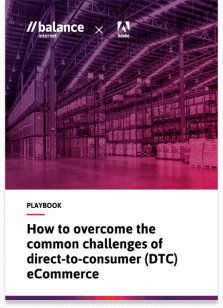Connection As Currency — How D2C Brands Are Changing Commerce
Latest news / 9 February 2022


Discover how D2C brands are leveraging connection as currency.
We’ve always known that brands need more than a good product and website to stand out from their competitors and maintain an enduring growth trajectory. But what is it that they need to do to achieve this? The answer is almost always a connection.
With the pandemic fast-tracking Direct-to-Consumer (D2C) brands’ digital capabilities, we saw many completely transform what connecting with their customers looked like.
Connected customers are more than twice as valuable as highly satisfied customers. In addition, increasing emotional connection with customers is proven to drive significantly better financial outcomes. Research from Harvard Business Review across hundreds of brands shows that the most effective way to maximise customer value is to connect with customers at an emotional level – tapping into their fundamental motivations and fulfilling their deep, often unspoken emotional needs.
How is this changing D2C commerce? We know that connected customers who also become loyal customers will buy more of a brand’s products, visit more often, and engage with their communications across channels.
Commerce platforms need to be innovative and adaptable across the entire customer journey, as the customer experience is continually evolving. The commerce platform is the crucial enabler for D2C brands to foster connectivity and drive growth.
Here are four key ways D2C brands are driving connection and changing commerce:
#1. A ‘less is more’ product offering
Curation is everything. In a digital world where consumers are increasingly overwhelmed by choice, D2C brands should seek to decrease decision exhaustion for their customers.
Single product and limited collection sites are carefully curating products available to consumers, choosing to focus on attributes and information to drive connection.
In addition, careful curation extends beyond the website to the product packaging. Global trend forecaster WGSN predicts that a focus on packaging with direct and concise labelling will be a critical play, encouraging brands to tap into the need for stability and simplicity.
#2. Prioritise connecting with the regional customer
ABS research shows that Australia’s capital city populations decreased in record numbers during COVID. While the trend was observed before this, the exodus from Melbourne, for example, increased by eight times since the pre-lockdown period.
Consumers may be migrating outside your delivery radius, but that doesn’t mean they won’t want the products and services they enjoyed before. It’s unknown whether tree changers will flock back to cities once we emerge from lockdowns. Still, until then, D2C brands connecting with their customers are investing in broader delivery catchments, making sure their products can reach them, and removing barriers to purchase.
#3. Welcoming customers into a community
Recent research from Sprout Social shows that when customers feel connected to brands, more than half (57%) will increase their spending with that brand, and 76% will buy from them over a competitor.
Leading D2C brands use their social platforms and channels to invite customers to join meaningful conversations. Sometimes this is about their products, but also often about broader social and cultural issues and events. Further, they use this to build a community that drives online and offline connections.
#4. Treat ‘connection’ as a currency
In today’s digital world, connection is a currency. Many D2C brands have a unique opportunity to take their significant expertise in developing customer-centric products and services and combine this with modern marketing capabilities. Building a ‘connection’ strategy into the business objectives is vital to advancing revenue growth and market share.
Research from eMarketer shows that two-thirds of consumers equate feeling connected to a brand with trust. While D2C brands don’t need to appeal to everyone, they do need to attract loyal customers. To work this into a campaign, focus on connection-driven campaigns that highlight how your product meets customer needs. Rather than what the product is, highlight how the product adds value to their life. Some 51% of people say their relationship with a brand starts when they feel they understand them and their needs.
We won’t be in lockdown forever, and when it ends we will emerge into a different world.
Now is the time to envision how your brand will deliver products that drive connection. D2C brands with a competitive advantage recognise that consumers want more from brands than just products and services. They seek community and connection.
After all, 2020 was heralded as the dawn of the connected decade.
Whether in a business ‘buying’ environment or a personal shopping experience, there’s no denying that connection is driving commerce.
–
This article was originally published on 28 September 2021, on B&T.



